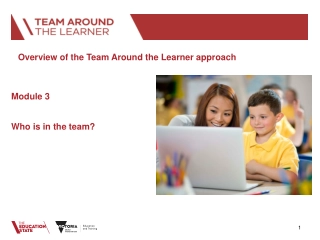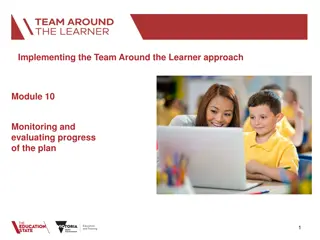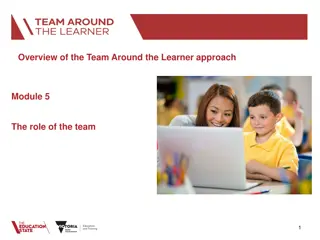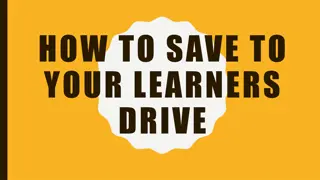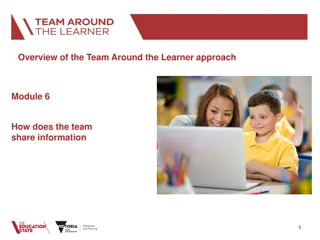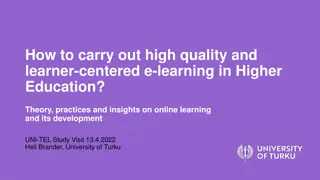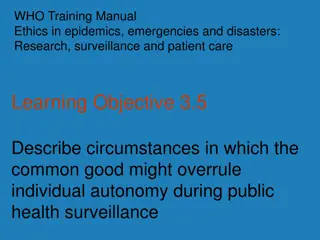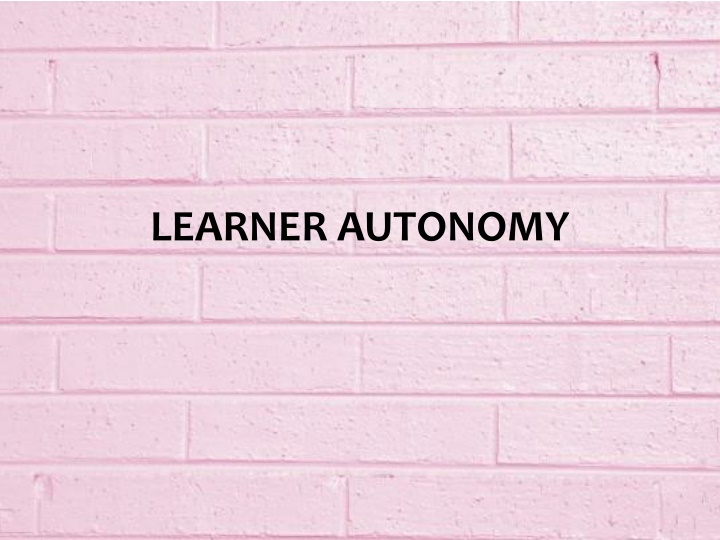
Empowering Language Learners through Autonomous Learning
Explore the concept of learner autonomy and how it enhances language learning. Learners taking responsibility for their learning process, making decisions, and implementing them leads to better outcomes. Discover the benefits of enthusiastic learners, challenges faced by adult learners, and principles for achieving autonomous learning. Autonomous learning personalizes the learning experience, focusing on learners' preferences for improved results.
Download Presentation

Please find below an Image/Link to download the presentation.
The content on the website is provided AS IS for your information and personal use only. It may not be sold, licensed, or shared on other websites without obtaining consent from the author. If you encounter any issues during the download, it is possible that the publisher has removed the file from their server.
You are allowed to download the files provided on this website for personal or commercial use, subject to the condition that they are used lawfully. All files are the property of their respective owners.
The content on the website is provided AS IS for your information and personal use only. It may not be sold, licensed, or shared on other websites without obtaining consent from the author.
E N D
Presentation Transcript
However good a teacher is, however effective the teacher s instructional skills are, students will never learn a language UNLESS they aim to learn outside as well as during the class time.
Learner autonomy refers to the principle that learners should take a maximum amount of responsibility for what they learn and how they learn it. In other words, it is a situation in which the learner is totally responsible for all the decisions concerned with his/her learning and the implementation of those decisions.
Enthusiastic learners They spend more time learning on their own . They feel more positive about themselves and learning. Less enthusiastic learners They suffer from low self- esteem. They are usually unlikely to continue studying on their own after the course.
Most adult learners carrying out learning by themselves due to the insufficient knowledge of how to learn or study a foreign language lack of knowledge and skills on how to develop their language competencies. have difficulties in Therefore, learners should be trained in such a way that they should be able to take control over their own learning processes.
Autonomous learning is said to make LEARNING more personal and focused, and consequently learning outcomes since learning is based on learners preferences. achieve better needs and
PRINCIPLES FOR ACHIEVING AUTONOMOUS LEARNING 1. Active involvement in student learning 2. providing options and resources 3. offering choices and decision-making opportunities. 4. supporting learners 5. encouraging reflection
Other features of autonomous learning are : * the teacher becomes less of an instructor and more of a facilitator. * students are discouraged from relying on the teacher as the main source of knowledge.
* students are encouraged to make decisions about what to learn * students awareness of their own learning styles is encouraged. * students are encouraged to develop their own strategies.
Although there is variation between enthuiastic and learners in terms of autonomy, there are various ways that students could be helped to become autonomous learners both during language courses and after the courses. less enthusiastic
ROUTES TO AUTONOMY A. Learner Training 1. Students could be introduced to different learning style alternatives to choose from. 2. The teacher can help students to reflect on the way they learn.
For example; students could be asked to complete a questionarie in which they profile their feelings about aspects of language. 3. Students could also be asked to keep diaries to reflect on the way they learn best, and to descibe their favourite lessons ( easiest, most difficult / and why ? )
4. They could be taught how to use tools such as dictionaries or different kinds of resources. 5. The teacher can refer the students to practice exercises for grammar and vocabulary and tell them where to find pronunciation exercises.
6. The teacher might also help the students especially with less memorable or difficult words , suggesting what they should do. 7. The students could also be made to reflect on the language itself, asking them to list the most dificult grammar they came across, or their favourite ten new words that tey have learned in the last two weeks.
8. Students can be taught specific strategies for better learning. This may be given in the form of learning habits. 9. Students should also be trained to gain some strategies for better reading, speaking, listening and writing.
The Newspapers internet Simplified readers SAC Authentic material Homework Self-study Reading Ways of reading in class Learning English
B. Homework Function of homework ? What kind of homework to assign ? How much homework to set ?
Amount of homework ? In order to get the level just right, the teacher need to discuss with students how much homework they can cope with. Homework should be seen as an important contribution to .. learner autonomy.
Again a homework questionarie could be constructed. * what type of homework they are given * whether they skip homework and why * what homework they find most useful. ... etc.
Homework tasks should become ............. relevant interesting useful and more like personal plan of study.
C. Keeping learning journals Students could be asked to keep journals or diaries of their learning experiences. In this way, they will be able * to reflect on their lessons, * to explore their successes and difficulties * to come to a greater understanding about learning and language


